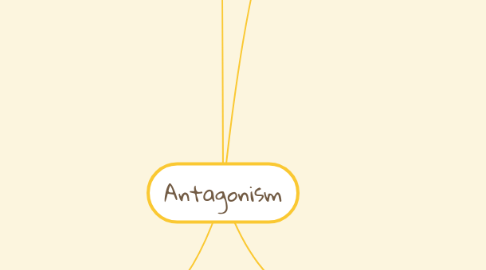
1. Guidelines
1.1. Anything goes!
1.2. No criticism or flaming allowed
1.3. The Wilder The Better
1.4. Quantity is Quality
1.5. Set a Time Limit
2. Amensalism (Antibiosis and Lysis)
2.1. one population adversely affects the growth of another population whilst itself being unaffected by the other population
2.2. Metabolites penetrate the cell wall and inhibit its activity by chemical toxicity
2.3. Trichoderma harzianum and T. viride are secrete cell wall lysing enzymes, 6-1, 3-glucanase, chitinase, and glucanase.
2.4. Substances noxious to certain soil-borne plant pathogens are secreted by roots of maize, clover, lentil (glycine, phenylalanin) and other legumes, flax (hydrocyanic acid), pine (volatile mono-and sesquiterpenes) and by other plant roots.
2.5. Other plant residues are the source of phenolic and non-volatile compounds. Similarly, antimicrobial substances (antibiotics) produced by microorganisms (soil bacteria, actinomycetes, fungi) are aldehydes, alcohols, acetone, organic acid, nonvolatile and volalite compounds which are toxic to microbes. Changes in microbial structures (cell wall, hyphae, conidia, etc.), may occur when microorganisms lack resistance against the attack by deleterious agents or unfavorable nutritional conditions. A chemical substance (i.e. melanin) is present in their cell walls to resist the lysis. Moreover, cell wall constituents, for example, xylan or xylose containing hetero polysaccharides, may also protect fungal cells from lysis.
2.6. parasitism and predation.
2.6.1. Culture medium
2.6.2. components
2.6.3. support system
3. competition
3.1. (i) rapid germination of fungal propagules and fast growth of young hyphae towards a source of soluble nutrients,
3.2. (ii) appropriate enzyme equipment for degradation of carbon constituents of plant tissuess
3.2.1. (ii) appropriate enzyme equipment for degradation of carbon constituents of plant tissues
3.2.2. (ii) appropriate enzyme equipment for degradation of carbon constituents of plant tissues
3.3. (iii) excretion of fungistatic and bacterio-static growth products including antibiotics, and
3.4. (iv) tolerance of fungistatic substances produced by competitive microorganisms.
4. Siderophores
4.1. other extracellular metabolites which are secreted by bacteria, actinomycetes, yeasts, fungi and dinoflagellates
4.2. microbial iron chelating compounds because they have a very high chelating affinity for Fe3+ ions and very low affinity with Fe2+ ions. After chelating Fe3+ they transport it into the cells.
4.3. PGPR
4.4. after chelating Fe3+ make the soil Fe3+ deficient for other microorganisms. Consequently growth of other microorganisms is inhibited. it supplies iron to plants. Therefore, plant growth is stimulated.
5. Predation and parasitism
5.1. Mycoparasitism
5.2. Nematophagy
5.2.1. arrest the pathogenic nematodes (N) and finally kill them
5.3. Mycophagy
5.3.1. (i) Attachment: Attachment of trophozoites of amoebae (a) to fungal propagules i.e. conidia (c) or hyphae (h) appears to be a matter of chance. It takes place by chemotaxis or thigmotaxis
5.3.2. ii) Engulfment: Fungal propagules (e.g. spores, conidia, fragments of hyphae) are fully engulfed by amoebae (b). The small trophozoites attached the hyphal wall or spore and make perforations on it.
5.3.3. (iii) Digestion: The completely or partially engulfed propagules/cyloplasm of the host fungi are digested in a large central vacuole formed inside the cyst (Fig. 13.5C).

